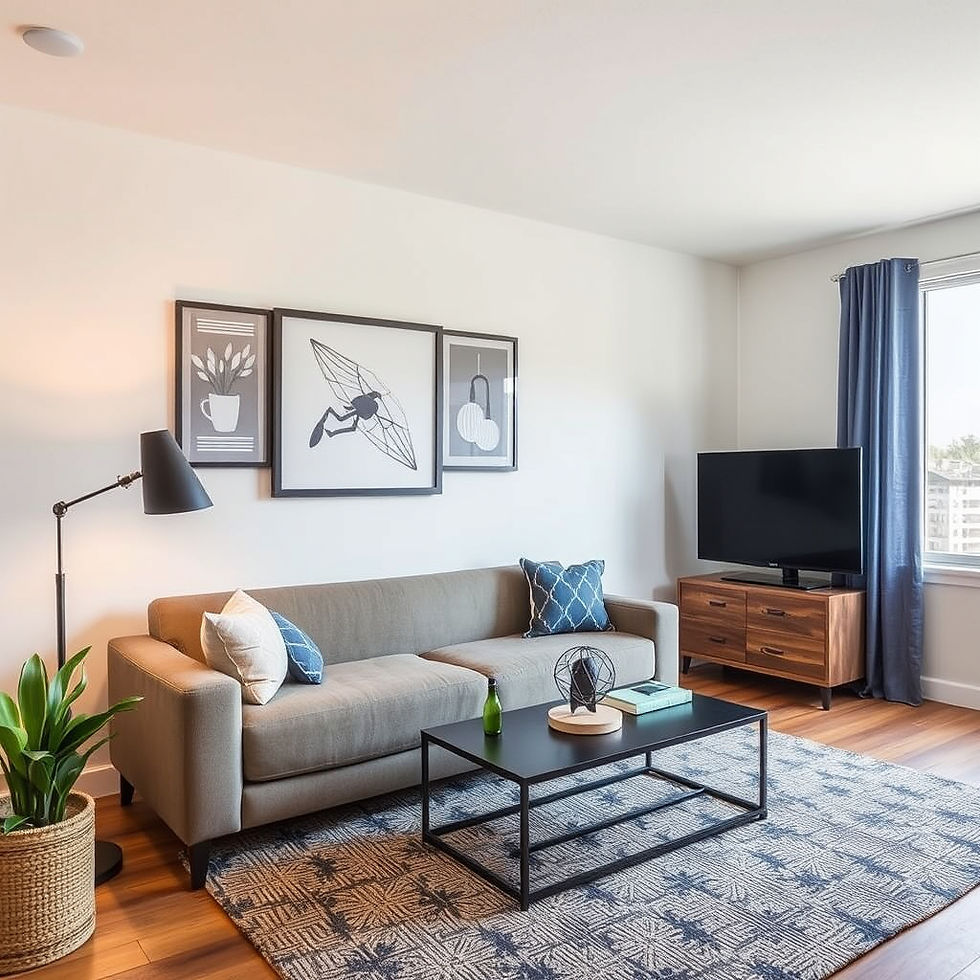Five Key Trends Seen Shaping Apartments in 2019
- Admin

- Jul 18, 2020
- 4 min read
Millennials Seek Space-Sharing, Carefully Chosen Ground-Floor Retailers
Millennials are expected to drive some of the most noticeable shifts in the apartment industry this year as developers focus on high-tech concierges, suites with shared kitchens and ground-floor smoothie shops.
The group of Americans between the ages of 23 and 38, which has some of the biggest spending power in America, is open to space-sharing that’s already taken over offices. It's moving into apartments in the form of "co-living" configurations, according to developers, financiers, investors and researchers at the annual meeting in San Diego of the Washington, D.C.-based National Multifamily Housing Council.
Here are five apartment trends to watch:
1. Space Sharing. Developers are increasingly finding that they can garner more revenue for the same general construction cost by fitting more rental units in a building, clustering them in a "co-living" configuration around shared spaces like kitchens and dining rooms. "It doesn’t necessarily mean lower rent, but it does mean more amenities," said Norm Miller, a real estate finance professor at University of San Diego.
There are limits to how much residents really want to share -- forget common bathrooms, for instance -- and Cliff Nash, senior managing director for national apartment developer Greystar, said operators in countries like the Netherlands that have adopted co-living are still having to set rules against residents coming to breakfast in their boxers. But he said co-living could present a viable way to get more relatively affordable housing units into otherwise too costly markets.
Bob Flannery, president of development and investment firm CA Residential, foresees a time when firms will plan "buildings within buildings" with various tiers of co-living units, luxury units and other types of apartments geared to young professionals, all in the same property.
2. On-Site Technology. Leonard Wood Jr., senior managing director at Trammell Crow Residential, said the apartment developer is making use of software applications like Site Plan, which helps residents schedule maintenance appointments and is in the process of establishing a pilot program with retailer Amazon to set up package delivery lockers in some locations, similar to those now seen in places like college bookstores and Amazon's own Whole Foods stores.
Nash said Greystar at some locations has been experimenting with app-based concierge services where residents can get help with grocery shopping, dry-cleaning trips and package pickups. "It’s almost like an executive assistant on steroids that’s a real person," Nash said. "We’ve got a generation of people who are a lot more comfortable interacting with the world that way."
3. More Uses. Apartments are increasingly being planned as part of walkable mixed-use developments. Cities love the concept, but components like ground-floor retail must be well thought out and cater to the demographics of the on-site residents, said Phillip Martin, senior vice president of market research at investment firm Waterton. Among the concerns, car trips won't be minimized if the retail spaces don't provide the right services to the apartment residents.
Popular uses for these spaces often are coffee shops, yogurt-smoothie places or quick-service eateries. But developers are increasingly focused on lining up tenants that appeal to their apartment dwellers such as a gourmet grocer, a fitness studio, or a useful service business such as a dry cleaner.
The focus on appropriate retailers is even more important in areas such as downtown San Diego that often require ground-floor retail for apartment project approval. Those spaces can sit empty for a while because retail tenants usually want the residents in place first before they'll commit to opening a location in a new building. Debt and equity financiers don’t like paying for commercial space that often sits empty long after apartments have begun to lease up in many cities, he said.
4. Millennial Demand. The latest annual multifamily investment report from brokerage firm Marcus & Millichap noted that unemployment among young adults age 20 to 34 fell to a 48-year low of 4.5 percent in 2018. Two-thirds of this millennial group lives in rental housing, and that contingent will continue to be a big driver of apartment demand, as long as the strong job market continues to allow those young consumers to move out of their parents’ homes.
5. Sunbelt, Southeast Focus. New investment and development activity this year and beyond will focus in states that combine good demographics with lots of sunshine, low taxes and relatively low costs for land and other operating costs. Frequently mentioned are cities such as Phoenix, Dallas, Las Vegas and Orlando, Florida. Trammell Crow’s Wood said Orlando, for instance, "has been consistently strong for the past five to six years."
Even so, the relatively less sunny Midwest is also garnering some attention in the early months of 2019, with experts pointing to solid supply-and-demand and job-growth fundamentals in cities such as Columbus, Ohio, and Minnesota’s Minneapolis-St. Paul market. In fact, Minneapolis-St. Paul placed at No. 1 in Marcus & Millichap’s latest ranking of top U.S. multifamily investment cities, moving up two notches from a year ago and besting San Diego, New York City, Los Angeles and Seattle-Tacoma in this year’s Top 5.




Comments